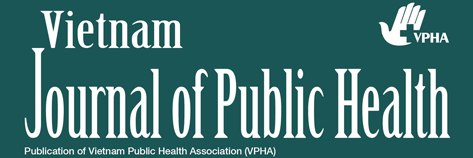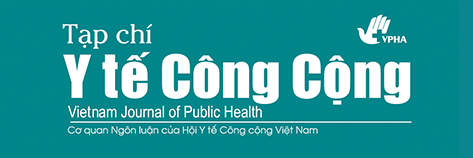The effectiveness of an intervention to reduce risk of dioxin exposure in Da Nang: Changes in community knowledge, attitudes and prevention practices after 2.5 years
Abstract
Environmental and biological samples taken around Da Nang Air Base have shown elevated levels of dioxin over many years1, 2, 3. A pre-intervention knowledge, attitudes and practices (KAP) survey (2009), a risk reduction program (2010) and a post intervention KAP survey (2011) were undertaken in four wards surrounding Danang Airbase. A follow-up evaluation was undertaken in 2013. A KAP survey was implemented among 400 randomly selected food handlers. Eleven indepth interviews and four focus group discussions were also undertaken. The knowledge of respondents remained positive and/or improved at 2.5 years follow-up.There were no significant differences in attitudes toward preventing dioxin exposure across surveys; most respondents were positive in all three surveys.An increase in households (69.5%) undertaking measures to prevent exposure was observed, which was higher than in the pre-intervention survey (39.6%) and post- intervention survey (60.4%) ( 2 = 95.6; p < 0.001). The proportion of respondents practicing appropriate preventive measures was also significantly improved. Despite most of the intervention programÊs activities ceasing in 2010, the risk reduction program has resulted in positive outcomes over the longer-term, with many knowledge and attitude measures remaining stable or imporving. Some KAP indicators decreased, but these KAP indicators were still significantly higher than the pre-intervention levels.
Keywords
Full Text:
Download PDFReferences
Hatfield Consultants and Office of the National Steering Committee 33 MONRE, Comprehensive Assessment of Dioxin Contamination in Da Nang Airport, Viet Nam: Environmental Levels, Human Exposure and Options for Mitigating Impacts, 2009.
Hatfield Consultants, Assessment of Dioxin Contamination in the Environment and Human Population in the Vicinity of Da Nang Airbase, Vietnam - Report 2: Draft Final Sampling Design, 2006.
Minh, T.B., et al., Chapter 11 Persistent Organic Pollutants in Vietnam: Levels, Patterns, Trends, and Human Health Implications, in Developments in Environmental Sciences, S.T.G.J.J.P.G. An Li and K.S.L. Paul, Editors. 2007, Elsevier. p. 515-555.
Tuyet-Hanh Tran Thi, Ngoc-Bich Nguyen, and V.-A. Le, New strategy toward dioxin risk reduction for local residents living surrounding severe dioxin hot spots in Vietnam. Global Health Action, 2013.
Vu Anh, L., et al., Knowledge, attitude and practices of local residents at four wards, Da Nang City - Vietnam on preventing dioxin exposure through foods. Organohalogen Compounds, 2010. 72: p. 29-32.
Vu-Anh, L., et al., Public health intervention program to reduce the risk of dioxin exposure through foods in Da Nang hot spot. Organohalogen Compounds, 2011. 73: p. 1757-1760.
Muller, J.F., et al., Transfer of PCDD/PCDF from contaminated soils into carrots, lettuce and peas. Chemosphere, 1994. 29: p. 2175-2181.
Vu Anh, L., et al., Knowledge, attitude and practice of local residents at Bien Hoa City- Vietnam on Preventing dioxin exposure through foods. Organohalogen Compounds, 2008. 70: p. 000535-000538.
Vu Anh, L., et al., Public health intervention program to reduce the risk of dioxin exposure through goods in Bien Hoa City Vietnam - encouraging results after one year of intervention Organohalogen Compounds, 2010. 72: p. 24-28.



